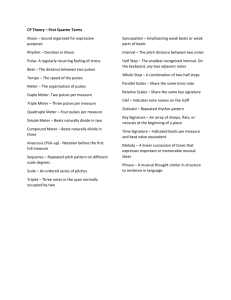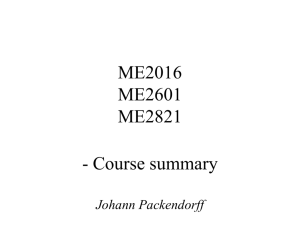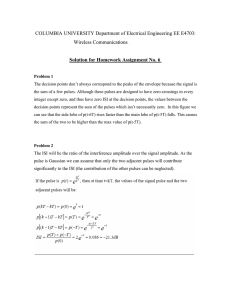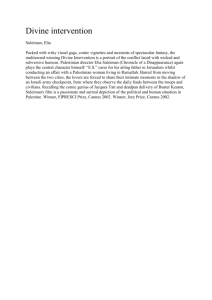Pulses for monitoring consumption and production data in real
advertisement
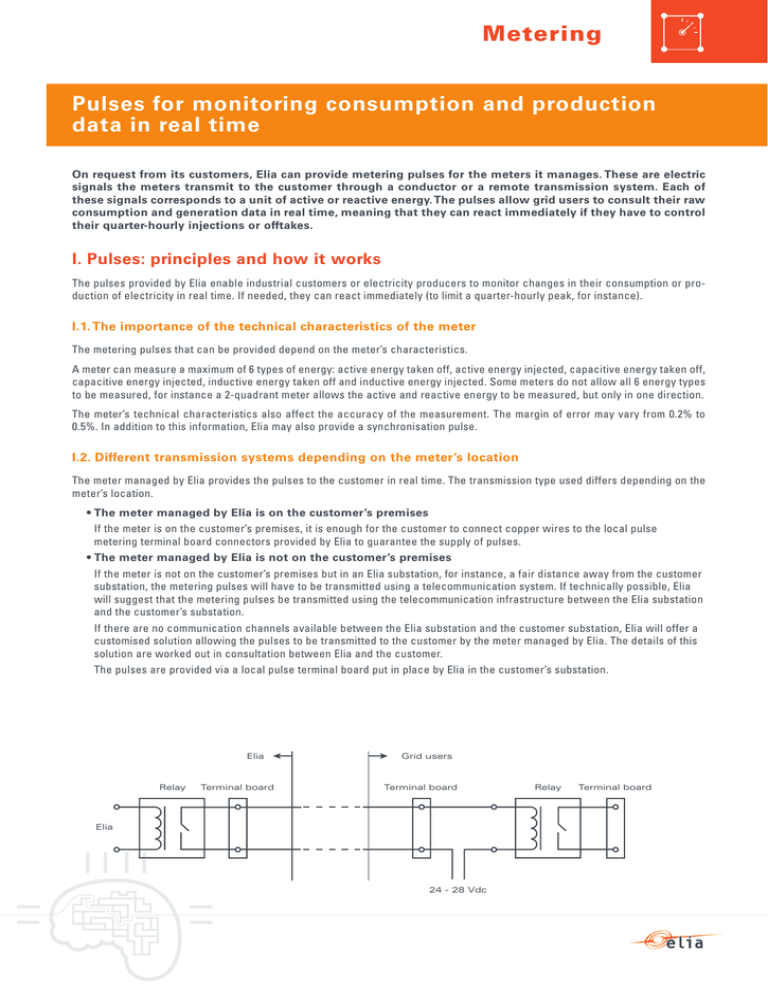
Metering Pulses for monitoring consumption and production data in real time On request from its customers, Elia can provide metering pulses for the meters it manages. These are electric signals the meters transmit to the customer through a conductor or a remote transmission system. Each of these signals corresponds to a unit of active or reactive energy. The pulses allow grid users to consult their raw consumption and generation data in real time, meaning that they can react immediately if they have to control their quarter-hourly injections or offtakes. I. Pulses: principles and how it works The pulses provided by Elia enable industrial customers or electricity producers to monitor changes in their consumption or production of electricity in real time. If needed, they can react immediately (to limit a quarter-hourly peak, for instance). I.1. The importance of the technical characteristics of the meter The metering pulses that can be provided depend on the meter’s characteristics. A meter can measure a maximum of 6 types of energy: active energy taken off, active energy injected, capacitive energy taken off, capacitive energy injected, inductive energy taken off and inductive energy injected. Some meters do not allow all 6 energy types to be measured, for instance a 2-quadrant meter allows the active and reactive energy to be measured, but only in one direction. The meter’s technical characteristics also affect the accuracy of the measurement. The margin of error may vary from 0.2% to 0.5%. In addition to this information, Elia may also provide a synchronisation pulse. I.2. Different transmission systems depending on the meter’s location The meter managed by Elia provides the pulses to the customer in real time. The transmission type used differs depending on the meter’s location. •The meter managed by Elia is on the customer’s premises If the meter is on the customer’s premises, it is enough for the customer to connect copper wires to the local pulse metering terminal board connectors provided by Elia to guarantee the supply of pulses. •The meter managed by Elia is not on the customer’s premises If the meter is not on the customer’s premises but in an Elia substation, for instance, a fair distance away from the customer substation, the metering pulses will have to be transmitted using a telecommunication system. If technically possible, Elia will suggest that the metering pulses be transmitted using the telecommunication infrastructure between the Elia substation and the customer’s substation. If there are no communication channels available between the Elia substation and the customer substation, Elia will offer a customised solution allowing the pulses to be transmitted to the customer by the meter managed by Elia. The details of this solution are worked out in consultation between Elia and the customer. The pulses are provided via a local pulse terminal board put in place by Elia in the customer’s substation. Elia Relay Terminal board Grid users Terminal board Elia 24 - 28 Vdc Relay Terminal board I.3. Tariffs If any equipment has to be put in place to provide or transmit the metering pulses to the customer’s facilities, this will be covered by an Elia price offer. If Elia’s telecommunication infrastructure is used to transmit the metering pulses to the customer’s facilities, the customer will have to pay a charge periodically. The metering pulses are provided at no extra cost. II. Benefits of the pulses There are many ways in which customers benefit from having pulses provided by the Elia meter, including cost control and data reading. The pulses provide customers with metering data without them having to install their own meters. Providing these pulses enables customers to: •monitor changes in their generation or consumption of electricity in real time, allowing them to optimise their consumption or injections. For example, an exceptional peak may be detected in real time. Similarly, a corrective measure may avoid an excessive quarter-hourly peak; •directly control some of their processes (using an automated system) to optimise their consumption; •check whether load forecasts are being reflected in reality; •facilitate management by an ARP of the balance between their injections and offtakes. III. How to benefit from this service Customers wanting to receive these pulses need to contact their key account manager. IV. Legal and contractual basis Metering pulses can be provided once a metering services contract has been signed by the customer and Elia and after completion of any work needed to provide the pulses. If the customer that wants to receive metering pulses is not an Elia grid user, the grid user that acts as an intermediary between Elia and the customer in terms of offering access to the high-voltage grid will have to give its consent to Elia providing the pulses. Transmission of pulses by an Elia meter in 5 key points • Elia provides its customers with pulses coming from the meters it manages. • The pulses enable Elia customers’ consumption and production data to be monitored in real time, meaning that quick action can be taken to optimise their consumption or injections. • The pulses can provide information covering 6 different energy types. Depending on their technical characteristics, the meters provide information on these 6 types or on just some of them. Some meters are not able to provide pulses. • The transmission type used to provide pulses (transmission by cable, remote transmission or customised solution) will vary depending on the meter’s location. • The pulses will enable customers to optimise their costs and their consumption and production data. This preparatory work will mean that it can be decided whether a remote transmission system has to be installed and plans can be devised for any solutions needed for the customer to receive the pulses. Once a technical solution has been worked out in consultation with the customer, Elia submits a price offer for this work. M2-E-23.01.08 / Non-contractual document / Editor: J. Vandermeiren, Bd de l’Empereur 20, 1000 Brussels An Elia technician will analyse the configuration of the existing meters: technical characteristics, meters available, distance between the metering facilities and those of the customer, etc.

